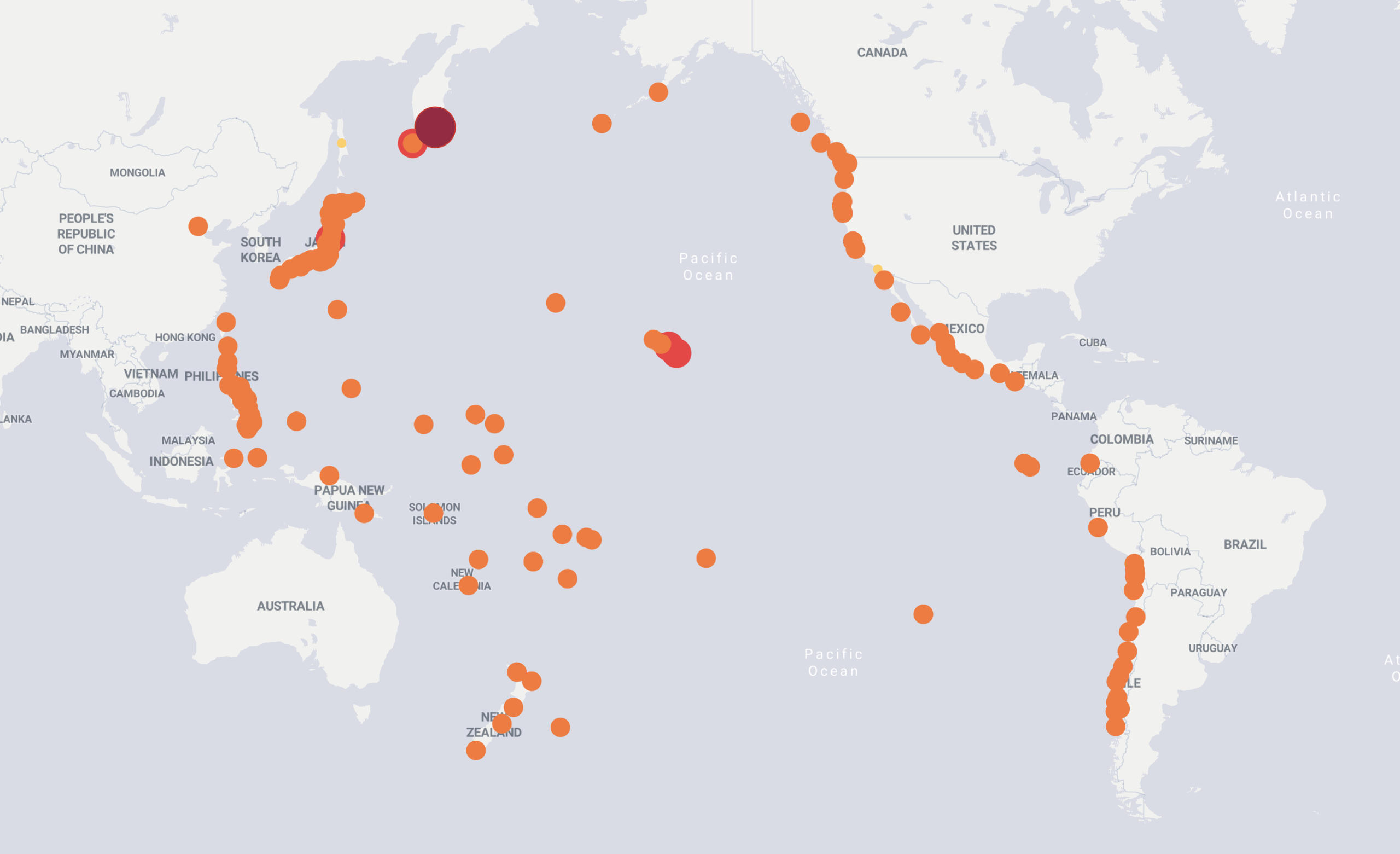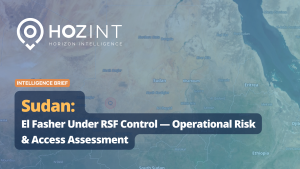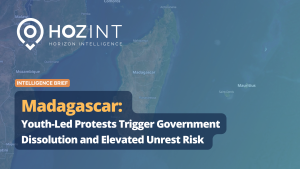Key Points
-
A magnitude 8.8 undersea earthquake near Kamchatka, Russia, triggered tsunami waves over 5 meters high, prompting evacuations and regional emergency declarations.
-
Russia’s Severo-Kurilsk suffered direct tsunami impact, with infrastructure damage and a declared state of emergency.
-
Hawaii experienced tsunami waves up to 1.8 meters, prompting widespread shutdowns of coastal utilities and aviation diversions.
-
Japan and the U.S. implemented preemptive evacuation and civil defence measures, although major damage was not reported.
-
Critical infrastructure in Russia and Hawaii (ports, wastewater systems, air traffic) were temporarily disrupted, though major casualties have not been confirmed.
Event summary
-
What: A powerful 8.8 magnitude undersea earthquake off the Kamchatka Peninsula triggered tsunami waves that impacted parts of Russia and the Pacific, including Hawaii.
-
When: 11:25 a.m. local time on Wednesday, 30 July 2025.
-
Where: The quake struck offshore of the Kamchatka Peninsula in Russia’s Far East. Tsunami waves affected Severo-Kurilsk, Hawaii, Midway Atoll, and generated alerts across Japan and Pacific territories.
-
Who: The primary nations affected include Russia, the United States (Hawaii), and to a lesser extent Japan.
-
How: Seismic activity along a subduction zone led to vertical displacement of the sea floor, creating high-energy waves that radiated across the Pacific basin.

Tsunami warnings issued following 8.8 magnitude earthquake 126 km east-southeast of Petropavlovsk-Kamchatsky, Kamchatka Krai
Analysis
The impact of the tsunami triggered by the 8.8 magnitude earthquake off Russia’s Kamchatka Peninsula has varied significantly across the affected regions, particularly Russia, the United States (Hawaii), Japan, and Pacific territories such as Midway Atoll. Each location experienced different levels of disruption, primarily dependent on their proximity to the quake’s epicenter, their disaster preparedness infrastructure, and logistical resilience.
In Russia, the region most severely impacted was Severo-Kurilsk, a remote Pacific coastal town that bore the brunt of the tsunami. The waves reached heights of over five meters, prompting a state of emergency and the evacuation of much of the local population. The remoteness of this region complicates emergency response efforts. Local infrastructure, already limited due to the area’s isolation, is likely to have suffered significant damage. Power lines, transformers, and communication towers near the coast were likely overwhelmed by saltwater and debris. Access roads and the regional port—vital for both supplies and evacuations—may have been rendered unusable. Medical services, reliant on small clinics and air evacuation for critical cases, are expected to be under severe strain. Military installations in Kamchatka, including Russia’s strategically vital Pacific Fleet submarine base at Vilyuchinsk, likely entered a heightened state of alert. While no damage has been confirmed at these military sites, naval and air operations may be disrupted until full infrastructure checks are completed. Given the logistical hurdles in the Russian Far East, recovery will be slow, heavily dependent on military and federal emergency services. The event has exposed a critical vulnerability in Russia’s disaster response capacity in its eastern territories, possibly prompting future investment in infrastructure upgrades and early-warning systems.
In the United States, Hawaii experienced tsunami waves of up to 1.8 meters. Although not catastrophic in height, the waves were strong enough to cause significant disruption in low-lying areas, particularly along the coasts of Oahu and Maui. Evacuation orders were rapidly issued, and residents responded effectively, aided by a network of sirens and mobile alerts. The contrast with the 2023 wildfires in Maui—where emergency communications failed—was stark, and public confidence in local civil defence systems appears to have improved as a result. However, the tsunami still posed a considerable threat to critical infrastructure. On Maui, authorities preemptively shut down water supply valves and multiple wastewater pump stations to prevent system overload or contamination. This led to reduced or no water access in many areas, affecting both residents and emergency responders. Maritime operations were suspended across Hawaiian ports, with the US Coast Guard ordering the evacuation of all commercial vessels. Air travel was also disrupted; several flights were diverted mid-air or cancelled entirely, leading to delays in both domestic and trans-Pacific routes. Ground transportation experienced major congestion as people fled coastal zones for higher ground. The strain on Hawaii’s infrastructure was evident, although the decisive action by local authorities mitigated the worst-case outcomes. The island’s strategic role as a forward operating base for the US military in the Pacific means even temporary disruptions have broader geopolitical implications. Facilities such as Pearl Harbour and Honolulu International Airport must now undergo post-event assessments, not only for physical damage but also for continuity of operations.
Japan issued tsunami warnings but was spared the worst of the impact. Wave heights remained minimal, and no injuries or infrastructure damage were reported. Nonetheless, Japan’s sophisticated tsunami readiness mechanisms were fully activated. Automated sea gates, high-speed train suspensions, and emergency broadcasting systems were deployed as precautionary measures. Coastal industrial regions, particularly in Hokkaido and Tohoku, temporarily paused operations to allow for safety inspections. Although there was no disruption to nuclear facilities, protocols established after the 2011 Tōhoku disaster were followed rigorously. Japan’s experience and infrastructure allowed it to absorb the shock with minimal operational impact. However, even a minor tsunami event serves as a real-world test of disaster resilience. It is likely that this incident will feed into national reviews of risk mitigation measures, including the protection of industrial zones and semiconductor manufacturing hubs that are essential to global supply chains.
Elsewhere in the Pacific, Midway Atoll—a remote US territory between Hawaii and Japan—recorded wave heights of up to six feet. Due to its sparse population and the effectiveness of early warnings, no injuries occurred. However, the island’s infrastructure is fragile. Saltwater intrusion may have damaged freshwater aquifers, and meteorological and communications equipment could have been compromised. As Midway serves as a wildlife sanctuary and a strategic monitoring post, even minor damage could reduce regional observational capabilities. The United States may need to dispatch assessment and support teams from larger bases such as Guam or Pearl Harbour to ensure full restoration.
In all regions, the tsunami underscored the stress that natural disasters can place on critical systems. It revealed how vulnerable island and coastal communities remain, particularly those dependent on limited infrastructure and narrow logistical windows. While there were no confirmed mass casualties, the cumulative disruptions to water, power, maritime, and air transport systems across these geographies highlight the urgent need for continued investment in resilient infrastructure, early-warning systems, and emergency response coordination. The incident also reaffirmed that natural disasters can have cascading effects not only on human safety but also on geopolitical posture and operational readiness in strategically sensitive regions of the Pacific.
Historical Context and Lessons
-
2006 Kuril Islands Tsunami: Similar seismic activity triggered waves of ~2m; limited preparedness in remote Russian towns led to infrastructural damage.
-
2011 Tōhoku Earthquake and Tsunami (Japan): Showed the risks to nuclear facilities, underscoring the importance of shutdown protocols. Japan remains a benchmark for tsunami resilience.
-
2023 Maui Wildfires: Highlighted failings in Hawaiian emergency response. The contrast with the tsunami alerts in 2025 shows major improvements in Hawaii’s civil defence posture.
Forecast and Strategic Outlook
Short-Term Outlook (1–2 weeks)
-
Russia:
-
-
Continued emergency operations in Severo-Kurilsk.
-
Reconstruction priorities will include water purification, power restoration, and reestablishment of logistics.
-
Military installations will be re-evaluated for seismic resilience.
-
-
-
Hawaii:
-
-
Coastal cleanup and inspection of wastewater systems will take precedence.
-
Civil aviation and port operations will resume gradually, but lingering disruptions to passenger and freight services are expected.
-
-
-
Japan:
-
-
Localised maritime safety protocols will remain heightened until full tsunami alerts are lifted.
-
-
Mid-Term Risk Outlook (3–6 months)
-
-
Natural Disaster Preparedness:
-
This event reinforces the vulnerability of island and coastal regions across the Pacific.
-
Civil and military planners in Russia and the U.S. are likely to push for upgrades in early-warning systems, coastal defences, and disaster response coordination.
-
-
Geopolitical Implications:
-
While not directly a geopolitical flashpoint, disaster response visibility can impact international perceptions of state capacity—especially in Russia, which is already managing reputational challenges related to its military actions abroad.
-
Disruption to Arctic-Pacific trade corridors (via the Northern Sea Route) could also occur if port infrastructure in eastern Russia remains impaired.
-
-
Conclusion
The July 30 tsunami has underscored critical vulnerabilities in civil infrastructure, particularly in Russia’s remote Pacific outposts and US island territories. While casualties appear minimal, systemic strain on utilities, transport, and emergency systems is likely in the short term. With climate-linked and tectonic events becoming more frequent and severe, investment in coastal resilience and interoperable early-warning systems is becoming strategically vital.
Continued monitoring of aftershocks, infrastructure strain, and political responses is advised.



